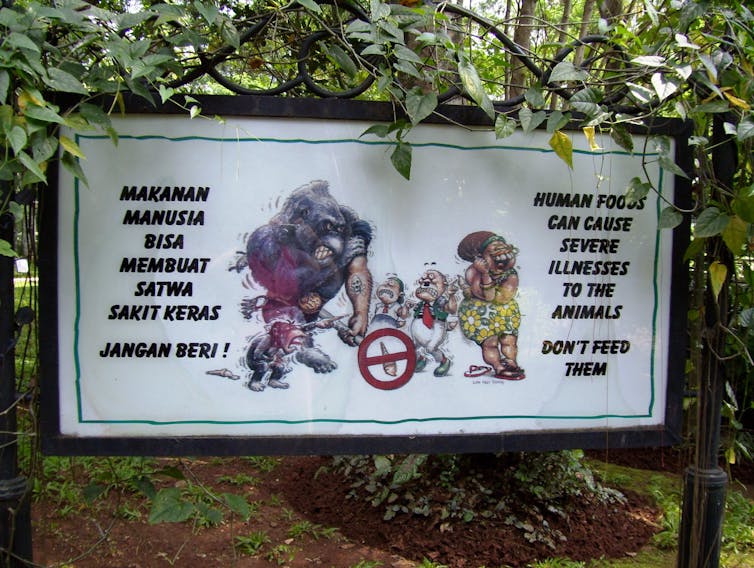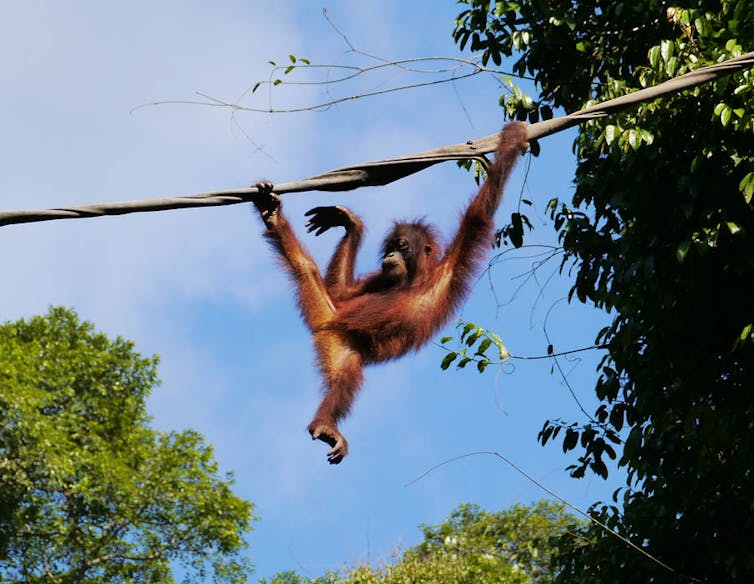A recent study on primate conservation confirms what primatologists have known for a long time: the planet of the apes is on the verge of extinction.
According to the latest estimates, 60% of species are endangered due to human activities and 75% of all primate populations are declining. For the great apes, the situation is even worse: four out of six species are on the threshold of extinction, according to the International Union for the Conservation of Nature.
I have been studying wild gorillas since 2000. Just a few years ago I remained optimistic about our ability to protect primates, but I’ve become more and more worried. Deforestation, that destroys primate habitat and other forest species, is accelerating. Every day on Earth the forest equivalent of one and a half times the surface area of Paris disappears. At this rate, the WWF warned that by 2030, 80% of the current tropical forest could disappear.
With such a catastrophic loss of habitat, great apes will not be able to survive. They are particularly vulnerable because of their very low rate of reproduction. An orangutan has a baby every eight years, a lowland gorilla every four years and a mountain gorilla every three years. Weaning times are long, and extensive learning time is essential because apes live in unstable forest habitats and have complex social interactions.
Diseases have exacerbated the situation for certain species. For example in 2004 an Ebola virus killed around 90% of western gorillas in certain areas of the Republic of Congo, and the species is now critically endangered.
Deforestation also increases the proximity between wild primates and human populations, also increasing disease transmission between apes and humans. As our closest relatives, great apes risk being severely infected by human diseases. A simple human flu can be lethal to a great ape; they are physiologically similar to us but do not carry the antibodies to fight our diseases.

Industrial-scale agricultural production is another threat. In particular, the expansion of palm oil production in East Asia has been deadly for orangutans: more than 60% of their habitat has been lost in the past 40 years. On the African continent, palm-oil plantation has already arrived and is expanding, to the detriment of wildlife.
Armed conflicts, mining and poaching are also destroying great ape populations. In the Democratic Republic of Congo (DRC), the eastern lowland gorilla population has been severely affected by human activities dropping by 80% in the past two decades.
The toll of poaching worsens every year. I study western gorillas in the Dzanga Ndoki National Park in the Central African Republic, a protected area managed by the World Wildlife Fund.
In June 2016 I saw something shocking that had never happened before. While we were observing the gorillas, a poacher approached, about 40 meters from us, and despite our presence shot and killed Sousa, an adolescent male gorilla who had I known since he was five years old. The poacher also tried to shoot Sousa’s father, the huge silverback Mayele, who rushed at them at the sound of the first gunshot. Park guards stayed by the dead body of Sousa all night to prevent poachers returning later to take it and sell its the meat.

Taken into consideration all these dangers, we need to react fast. First, raising public awareness and encouraging local-scale economy projects based on forest preservation in countries where infrastructure permits.
It is crucial to show local governments and people that primates are worth more alive than dead. For instance, tourists pay up to US$700 to spend an hour with the gorillas. It is not surprising that ecotourism is the second highest source of revenue for Uganda.
But ecotourism cannot be the solution in every country. In the Central African Republic, even though the lack of infrastructure make gorilla ecoturism difficult, do you know who is the most photographed character in the country? It is Makumba, the silverback of a very endangered and elusive species.
Makumba and his family today tolerate the close presence of human observers and tourists thanks to a long process of habituation that lasted eight years.
Palm oil and smartphones
We can also greatly contribute to the protection of primates by making lifestyle. First, avoid buying food products and cosmetics that contain palm oil. If you must, verify where it comes from and choose only sustainable plantations. Second, don’t rush off to buy the latest smartphone model, or at the very least, recycle the ones you want to change in order to reduce coltan mining, a raw material used in the microprocessors manufacturing of electronic devices.

Great apes are very valuable for us: we belong to the same family, Hominidae, and share 98.8% of our DNA with chimpanzees.
Great apes are charismatic and emblematic animals. Scientists, call them “umbrella” species since they are capable of attracting international attention, and while preserving them we are able to preserve other less charismatic species. They are also the forest gardeners.
Great apes also disperse the seeds of the fruits they feed on, thus contributing to the forest regeneration.
The Congo basin and the Amazon rainforests as we know, are the “lungs” of the Earth, they generate the oxygen that allow us to live. Without them, the planet of men will go into extinction along with the planet of the apes.
Translated from the French by Leighton Walter Kille.


